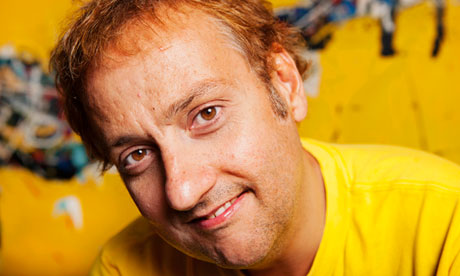
"Humorous Spanish books about cancer" is probably a small section at your library. "Humorous Spanish books about cancer that mention Gary Lineker" is probably an even smaller sub-genre. In fact, it likely includes only this strange self‑help memoir.
Aged 14, Albert Espinosa was a typical football-obsessed schoolboy from Barcelona. Then doctors found a malignant bone tumour in his left leg. His parents were told he had a 3% chance of survival and maybe a month to live. Just as they reached the airport to jet off for one last holiday together, the Espinosa family decided to turn back and fight. Albert spent the next decade in hospital, losing a leg, a lung and part of his liver. He learned to walk four times and endured gruelling amounts of chemotherapy – 83 sessions, to be precise.
By the time he was finally cured, aged 24, he'd written El Mundo Amarillo (The Yellow World), which the author insists is "not about how to survive cancer but how to live". It became a bestseller around Europe, shifting 1m copies. Now it's being published for the first time here.
The best bits of this initially beguiling book aren't the self-help sections but the vivid portrait Espinosa paints of life on the cancer ward. Having lost their hair because of chemo, the young patients take ownership of their baldness, styling themselves as a cool gang called the Eggheads. They talk into the small hours, sharing pain-coping strategies and street wisdom. They'd visit the "other Eggheads" (newborn babies), have wheelchair races, escape outside to sunbathe or watch the 1990 World Cup (hence that Lineker name-check). "I was happy when I had cancer," he writes. "It was one of the best times of my life."
The friendships formed in this environment are intense. Espinosa watched 22 fellow patients, mainly teenagers, die from the disease but is never maudlin about it. The Eggheads made a pact that "if one of us were to die, we would share out their life" by acting on their dying wishes. Espinosa now carries with him the desires and dreams of 3.7 friends.
Warmly evocative and shot through with black humour, these tales reminded me of kids' caper films such as Stand By Me, E.T. or The Goonies. It's no coincidence Espinosa has turned them into a hit Catalan TV series, Polseres Vermelles (Red Bracelets). Steven Spielberg is now remaking it under the title The Red Band Society.
Hospital staff make vivid cameos. A 7ft-tall physiotherapist preaches "the art of positive wanking". A neurologist shows how to "change his brain's factory settings". A nurse strokes his big toe comfortingly. "It was a bit sexy," he admits. A surgeon advises him to throw a farewell party for the leg he's about to lose. The night before the amputation, he does just that, inviting people with a connection to his left leg. They all tell stories about the limb, touch it and give it a send-off. He dances on it one last time. The next day, he'd "lost a leg but gained a stump". Having buried the leg, Espinosa says he's "one of the few people who can literally say they've got one foot in the grave".
Less successful is the book's second half, where Epinosa espouses his "philosophy for life" based on his 23 "discoveries" during illness. This happy world he found is yellow because that's the colour of the sun. It's around this point that his naive style starts to lose its charm and become as saccharine as a Purple Ronnie postcard.
While some ideas are interesting (say, mastering anxiety within 30 minutes), others are clangingly obvious. Does anyone need a book to tell them to be themselves or keep a diary, regardless of its author's good intentions and brave backstory? Espinosa advises changing the way you laugh every two years. At times, I felt like advising him to do something less printable.
Apparently, fans get tattoos of their favourite quotations, especially "Trust your dreams and they will come true", and send photos to the delighted author. Which is all very sweet, but such lines still don't mean much. You might as well ink your body with the contents of a fortune cookie or bumper sticker.
He's passionate about the importance of friendships, such as those formed with his fellow Eggheads. He encourages the reader to seek out their own "yellows" – special people who touch our lives, transform us for the better. We each have 23 – that number again. Espinosa's fixation with it feels forced and faux-mystical, despite his wide-eyed sincerity.
Things get downright irritating when he advises readers actively to seek out these 23 yellows, giving tips on how to spot and approach them. Build a mood-board of faces you're drawn to. Fertile hunting grounds include airports. A key part of bonding is caressing, cuddling and sleeping next to them. Call me an uptight Brit but I'm not going to start loitering in departure lounges, sidling up to strangers and fondling them because they look like a face off my mood-board. I'd get arrested. "Your honour, I thought she was a yellow" is unlikely to cut it in court.
I found myself wishing Espinosa had written a straightforward memoir, rather than using his experiences as a launch pad for this mystic mumbo-jumbo. His story is fascinating enough, without bolting on all the faux-profound, self-help hokum. Maybe such an approach was too easy for this extraordinary character, but it would've made his book less frustrating and more compelling – for me, if not for Mr Spielberg.

